Ryan Hall's Blog, page 164
June 2, 2017
IRONMAN Acquires Competitor Group Event And Media Properties
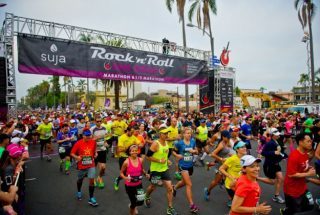
Are you thinking about signing up for a race? Don't wait—do it today!
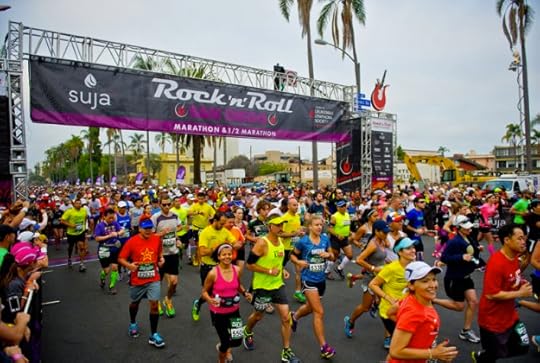
IRONMAN, a Wanda Sports Holdings Company, has acquired Competitor Group (CGI), they announced Friday, June 2nd. This includes the Rock ‘n’ Roll Marathon Series and media titles Women’s Running, Competitor, Triathlete and VeloNews. The combined entity further establishes IRONMAN as the leading Endurance Sports organization in the world.
“This is an important step in the growth IRONMAN has seen over the last decade,” said Andrew Messick, Chief Executive Officer for IRONMAN. “As a globally recognized endurance brand, the acquisition of the world’s largest running platform puts us in an exciting position for the future growth of running worldwide. The ability to help globalize the successful Rock ‘n’ Roll Marathon Series brings about many opportunities to demonstrate our leadership in this industry.”
This partnership makes IRONMAN the largest running event producer in the world. The Rock ‘n’ Roll Marathon Series sees more than 600,000 athletes each year across more than 30 events. IRONMAN already owns or operates more than 20 running races worldwide, including the Standard Chartered Singapore Marathon, ASB Auckland Marathon, Marathon Bordeaux and Across the Bay 10k.
“We are committed to providing our athletes with consistent, high-quality experiences across each of our events,” added Messick. “Our distinct expertise in event operations will allow us to ensure that athletes across the entire endurance life cycle are able to achieve their goals at any stage in their endurance journey—from 5K to IRONMAN.”
“This is a game changing development for the future of CGI and a clear signal into the investment being made in the global running community,” said Josh Furlow, President of CGI. “IRONMAN is a tremendous organization with incredible brand strength and I look forward to working with Andrew to bring together two of the world’s greatest event producers collectively as one team.”
Since the debut of the of the signature Rock ‘n’ Roll Marathon Series in 1998, CGI has continued to expand to key cities throughout the United States, covering 22 major markets in the United States and eight international races, from the United Kingdom to China, creating the largest running series in the world. The series made a huge splash in the running industry by putting live bands and cheer teams along the course, creating a block-party atmosphere for participants and spectators. This year marks the 20th anniversary of the series with the Synchrony Financial Rock ‘n’ Roll San Diego Marathon.
The post IRONMAN Acquires Competitor Group Event And Media Properties appeared first on Competitor.com.
How Plant-Based Athletes Can Fuel Their Workouts

In the athletic community, more and more attention is being given to plant-based diets. A properly nourished plant-based athlete can compete effectively at a high level in endurance sports.
Plant-based athletes include Scott Jurek, the world’s fastest ultradistance runner; Ironman triathletes Dave Scott & Brendan Brazier; track and field Olympian Carl Lewis; and bodybuilder Kenneth Williams. These athletes and many others continue to provide evidence that very high-level athletic performance can be achieved without the consumption of animal products.
While it’s true that athletes have different nutritional needs than non-athletes, it is entirely possible to meet those needs without meat.
How you eat before, during, and after your workouts is especially important. Duration, intensity and individual needs do come into play. However here are some general ideas to consider:
Pre-Workout
Smoothies are a great option because they’re quick, easy and packed with nutrients. Combine greens, such as spinach or kale, and fruits, such as berries, bananas or pineapples, in your blender. Then add a bit of water and you’re set. There are many other foods that you can add to smoothies to suit your personal needs or tastes. Chia seeds, flaxseed oil, dates, dulse powder and coconut oil are some worth considering.
Related: Fueling Tips and Recipes for Before, During and After a Workout
Post-Workout
Ideally, you should eat something within 20 minutes of finishing your workout. Depending on the timing of your workout, this might be a meal or just a substantial snack. A great option would be a high protein salad with vegetables, seeds, quinoa and legumes. Another great option is ¼ cup nut butter (like almond or peanut) along with ¾ cup sliced fruit, such as bananas or apples.
Remember, when fueling your workouts, every body is different. Timing and quantity of meals can be adapted depending on the duration and intensity of your workout.
Your body is a machine. If you want it to run properly, you’ve got to fuel it properly. By choosing generous servings of vegetables, fruits, legumes, nuts or seeds and whole grains, your body will reap huge benefits when it comes to both performance and recovery.
Related: Why You Should Eat Like An Elite
The post How Plant-Based Athletes Can Fuel Their Workouts appeared first on Competitor.com.
This High School Relay Team Had An Incredible Come-From-Behind Win

Photo: MileSpilt AZ
Earlier this month, the Hamilton High School 4×800 team pulled off a major surprise at the Arizona Division 1 State Championships. The relay team, comprised of Dan Dannel, Chris Fusaro, Noah Creighton, and David Nelson, was not one of the favorites to win the race. And indeed that looked accurate when after the first leg, they were in 16th place out of 18 teams.
However the turning point of the race happened during the second leg. After grabbing the baton, Fusaro managed to catch 12 runners, moving Hamilton into fourth place. The team held steady in the third leg, taking over the third spot right before the final handoff.
With 500 meters to go, Nelson, the team’s anchor, took over second place. During the last lap of the race, he claimed the lead and unleashed a kick to get his team to victory. They finished the race in 7:57.31.
Speaking to MileSplit AZ about their come-from-behind win, Creighton said, “Going into the race, our coach told us our strategy was to go out slow and catch up.” Added Fusaro, “I knew I just had to catch as many people I can.”
Watch the exciting race above.
Related: Irish Runner Leads Team To Victory With Crazy Kick
The post This High School Relay Team Had An Incredible Come-From-Behind Win appeared first on Competitor.com.
3 Apps That Help Runners Stay Mentally Strong

Whether you’re preparing for a first marathon or a faster 5k, runners have a tendency to focus solely on the nitty gritty details of a training plan. How far should my long run be this week? How fast should I run my 400m repeats? These are important considerations, but focusing on why we train should not be overlooked. Mental skills are equally as important as the physical side of training. These abilities must be learned and practiced in order to maximize athletic potential.
The practice of mindfulness isn’t a new concept, but it has gained a lot of popularity over the past few years. A conscious approach to better sport performance is comprised of a combination of mindfulness exercises and acceptance techniques. The practice is designed to enhance athletic goals and general psychological well-being. Traditional forms of sports psychology emphasize controlling thoughts and feelings while eliminating distress. Mindfulness approaches aim to enhance performance through the promotion of a non-judgmental, present-moment awareness and acceptance of one’s thoughts and emotion.
There’s ongoing research to determine how effective this approach is. Some people find the thought of meditation a little too new age-y. There are no guarantees that it will lead to personal bests. But for those wanting to give it a try, a number of smartphone applications are available to help learn the concepts and provide guidance.
Smiling Mind, Free
The creators of Smiling Mind are an Australian not-for-profit company who hope to “see mindfulness meditation on the Australian National Curriculum.” Along with programs to teach mindfulness meditation to children, the Smiling Mind app has 12 sport-focused sessions that were developed in partnership with Cricket Australia.
Since it’s free, the Smiling Mind app is a great place for beginners to try mindfulness meditation. The sport-specific offerings are limited. However the app is well-designed, easy to navigate and provides a large number of other mindfulness sessions.
Calm, $12.99/month or $60/year
Sleep is a vital part of an athlete’s recovery. While Calm lacks a sports-centric mindfulness focus, the app does include a section called Sleep Story. A narrator tells a story in a peaceful tone to help those struggling to power down at the end of the day.
For those without sleep issues, the app includes a solid “learn the basics” module. The guided and unguided sessions can be applied to sport situation, even if the app doesn’t have an athletic section.
Headspace, $12.95/month or $106/year
If you’re looking for the app with the largest collection of sport-centric content (80 different sessions over eight different topics) and don’t mind paying, then Headspace is the best choice. Modules covered by Headspace include motivation, focus, training, competition, communication, analysis, recovery and rehab.
Another strength of Headspace is the method by which the app explains mindfulness. Animated videos provide a visual explanation of the terminology and techniques. These assist in making mindfulness easier to understand and practice.
The post 3 Apps That Help Runners Stay Mentally Strong appeared first on Competitor.com.
8 Pieces Of Gear To Help You Celebrate National Doughnut Day

You donut even have to ask us if we like those delectable circles of dough, frosting and sprinkles! On National Doughnut Day, while you wait in line for your free doughnuts—yes, many places such as Dunkin’ Donuts and Krispy Kreme are offering freebies in honor of the holiday—you can grab this gear that will showcase your love.
We’ve put together a full ensemble for runners to don doughnuts all year long.
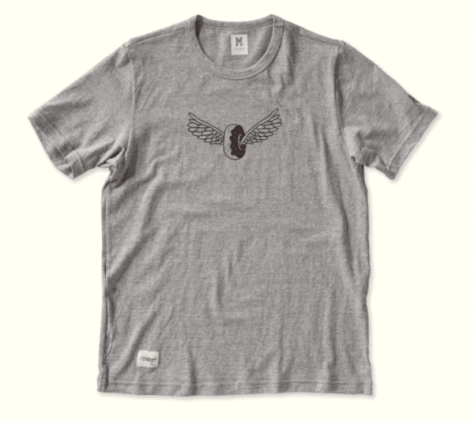


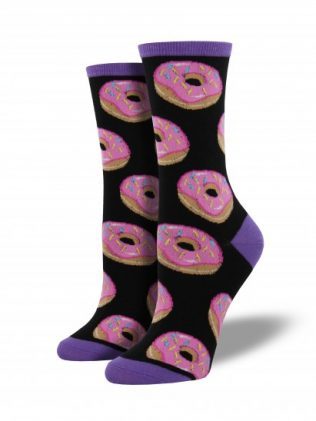
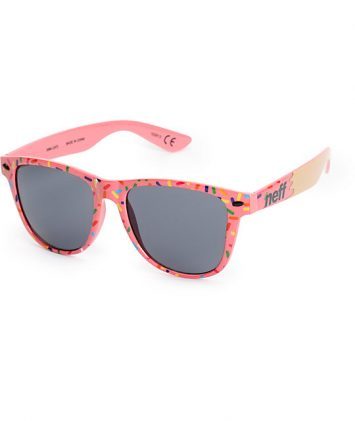
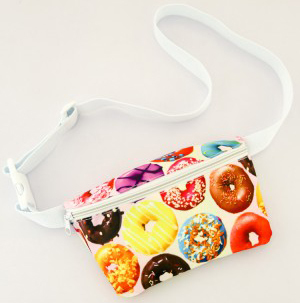


The post 8 Pieces Of Gear To Help You Celebrate National Doughnut Day appeared first on Competitor.com.
June 1, 2017
Dave McGillivray And Fenway Park To Host 112-Lap Marathon


Post originally appeared on Womensrunning.com
Yes, you read that right–the marathon inside one of the most famous ballparks in baseball will be 112 laps around the warming track. And the Boston Marathon race director and founder of DMSE Sports, Dave McGillivray, will be the race director of this event, according to SI.com.
Each lap is 350 meters—50 meters fewer than your standard oval—and laps will be recorded electronically. The catch (no pun intended)—only 50 runners will be accepted, and each one accepted will commit to raising $5,000 dollars for the Rex Sox Foundation, which focuses on bettering the lives of children, veterans and local communities through education, health and recreational opportunities. You can apply to be one of the lucky 50 at the foundation’s website.
The looped 26.2-mile race will begin at 5 p.m. on Friday, Sept. 15 and will include a 6-hour time cutoff. McGillivray expects the course to be USATF-certified, meaning that, yes, you will probably be able to qualify for the Boston Marathon if you hit your age-group qualifying mark.
For the last 30 years, McGillivray has completed the journey from Hopkinton to Boston after the final runner crosses the finish line on Boylston Street, and he has completed the marathon a total of 45 times. That will not be the case at Fenway; he was the first person to sign up and plans to run as a regular participant while simultaneously fulfilling any director duties. As of earlier this week, 37 people, including a runner from Taiwan, had signed up to join the cause.
For runners curious about how to alleviate the monotony of running 26.2 miles in circles, there will most likely be entertainment on the screens for runner and spectator enjoyment. This could include past Boston Marathons, the Red Sox game (they will be in Tampa Bay) and movies like Field of Dreams.
The post Dave McGillivray And Fenway Park To Host 112-Lap Marathon appeared first on Competitor.com.
A Look At 30 Years Of Competitor With Founder Bob Babbitt
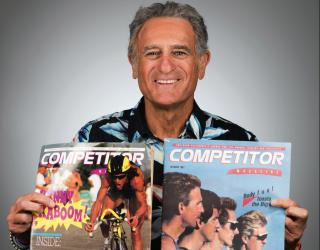
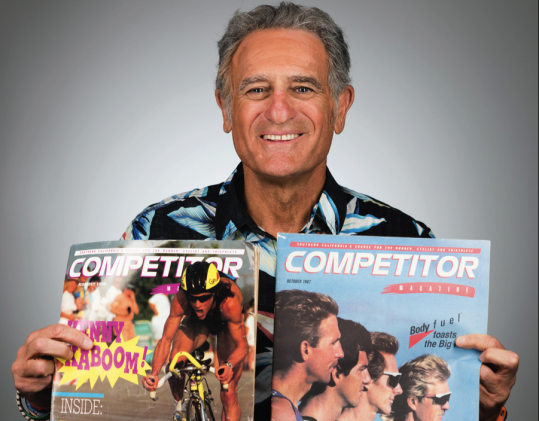
This month, Competitor magazine turns 30. Things have come a long way in those three decades—so we sat down with the creator of it all, endurance-sports legend Bob Babbitt, to hear how it all started.
Thirty years ago this month, Competitor magazine was created in a 200-square-foot storage shed in northern San Diego by Bob Babbitt and Lois Schwartz. In the beginning, it was a regional publication on newsprint that covered running, cycling, triathlon and every emerging fad sport you can imagine in Southern California in the 1980s. Babbitt was already a familiar face in endurance sports, having competed in the second ever Ironman triathlon in 1980 and being friendly with many star athletes. He handed out copies of his new magazine at local races in the region every single weekend, and distributed it at Rubio’s Fresh Mexican Grill and at Jamba Juice locations. In the ’90s and 2000s, Competitor expanded all over the nation—first by buying other regional endurance-sports magazines, and later launching Competitor editions in other parts of the country. Babbitt also expanded his duties—co-hosting the weekly Competitor Radio show, and Breakfast with Bob during the annual Ironman World Championship, and creating the Endurance Sports Awards and the Muddy Buddy Race Series, among many other things. He stepped away from Competitor Group in 2014, but hasn’t slowed down one bit: He raced 40 times last year, and recently ran the Boston Marathon—dressed, as usual, in his Elvis costume.
How did you end up in San Diego and covering endurance sports?
• I was living outside Chicago, working with emotionally disturbed kids at a residential treatment center. My sister was teaching school here, and I decided I was tired of 60 below zero and all that crap, so in 1978 I came out and got a couple different job offers, including running a PE program. The program was called Bob Time, and basically I’d play with kids. We had no athletic fields, just blacktop, but we had a volleyball net and a pool. One of the things I did was create a little kids’ triathlon, called Ironkids, in 1981. Then I called up a guy from Running News [Editor’s note: it was later changed to Running and Triathlon News] and said, ‘I’m putting on this thing, why don’t you come out and cover it?’ He says, ‘Why don’t you write it up?’ I thought, OK, how hard can it be? So I wrote it, and he liked it. That led to leaving teaching in 1984 and working full-time as L.A. editor of that publication. Lois Schwartz, who was also a teacher, became the art photographer.
How did you go on to create Competitor?
• Running and Triathlon News was bought then immediately put out of business, so we were trying to figure out what to do with our lives. I talked to other regional-magazine publishers around the state, but no one was interested in having skinny runners on their covers, and they thought triathlon was a fad. So some friends called Lois and I into a meeting and gave us a check for $17,000 and said, go start your own magazine. For $200 a month we got 200 square feet under a guy’s bike racks in a shed in Del Mar. We didn’t pay ourselves for a year and a half, just lived on our savings and slept on people’s floors. But we loved what we were doing. We loved the athletes we were meeting. We loved telling the stories. The elite athletes are great, but it’s really the stories of perseverance and overcoming that are the hallmark of what Competitor is really about.
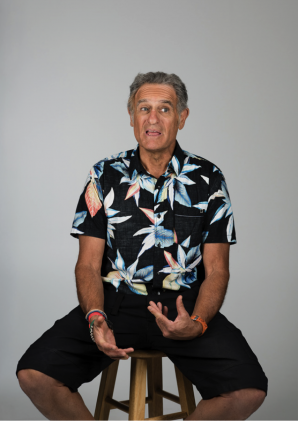
What were the early days like?
• Sometimes ignorance is bliss. We had no idea that 95 percent of all magazines go out of business in the first year. But we loved what we were doing—it never felt like I had a job. In the early days, we couldn’t pay our print bill. So I would drive to L.A. to supplement our dollars. This was when bodybuilding pants were big. I would buy these pants, and we’d get free booths in the race expos for Competitor, and I’d sell the pants then use the dollars from that to help pay our bills. There were some months we made more selling pants than from selling ads. And every once in awhile, a client couldn’t pay their bill with us so they’d give us a lot of their product—like sunglasses. So we’d sell them at the expos too to help pay our bills.
What made Competitor successful?
• I’ve always been a firm believer that you can rely on social media all you want, but when you want to grow something, it’s got to be person to person. I prided myself on handing out magazines at the races. Our philosophy first and foremost was that for us to be successful, events have to be successful. And if they’re filling up, then the retailers would be busy—and everyone in the sport wins. So it was our job to convince race directors to put on events all year long, and we would be there promoting. Our race-ad prices were a third of our regular advertising prices, because Lois and I didn’t look at those as ads.
I looked at our editorial like a triangle. The tip of this triangle are elite athletes. Those were the stories that a lot of people wanted to read about: what made them tick. A lot of the elites started out as age groupers. And their stories helped motivate our readers, the base of the triangle, to get into the sport. If those stories could keep our readers excited and touch the nerve of somebody who hadn’t done our sport before, and got new people in, that was huge.
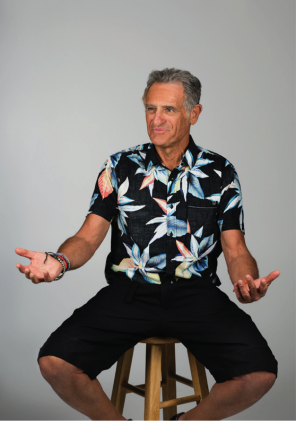
What does the name Competitor mean to you?
• When I’d be handing out magazines at events, I’d have people come up to me and say, ‘That’s not for me, I’m not a competitor.’ I’d say, ‘What do you mean?’ They’d say, ‘I’m not an elite athlete.’ So I said, ‘The word “competitor” does not mean elite athlete. What time did you get up in the morning? What did you come out here to do? You’re competing with the course; you’re competing with yourself.’ To me, that’s what it’s all about: The masses.
What’s one thing that should never change about Competitor?
• The Competitor brand has always been about changing lives through endurance. Even if it’s a color run, people are changing perceptions of themselves through that achievement. All it takes is to put a number on, and you can change everything.
The post A Look At 30 Years Of Competitor With Founder Bob Babbitt appeared first on Competitor.com.
How Should Runners Lift Weights?


There are two places where runners tend to display poor form: at the end of a marathon and in the weight room.
Most runners simply aren’t sure what to do around weights. And for good reason! Not many of us are lifters, and who likes flinging dumbbells around? Most runners would much rather crush single-track trails or enjoy some easy miles with our buddies.
Nevertheless, lifting weights is a critical piece of training for runners. In fact, I don’t even consider it cross-training—it’s simply part of the training that runners need to do.
The real key is knowing how to lift weights effectively. Runners are not bodybuilders and they are not lifting just for general health. Instead, they’re lifting for three main reasons:
To get stronger
To prevent injuries
To race faster
When accomplishing these goals, runners need a different approach in the weight room than your typical boot camp class.
The Mistakes Runners Make in the Weight Room
Runners usually make a combination of three major mistakes when they start lifting weights.
The first is that they lift for endurance with a high number of repetitions (12+) and for more than three sets. The problem with this approach is that no new physical skill is being developed. Instead, runners are building their endurance, but they already do this with nearly every run!
The second mistake is lifting weights that are too light. Since our goals are to get strong, runners need to lift weight that feels heavy. If you can lift a weight for 3 sets of 12 repetitions, it’s too light.
Tony Gentilcore, a strength training coach who has worked with every type of athlete from elite baseball players to casual gym-goers, sees this mistake all the time.
“Many endurance athletes assume that training ‘heavy’ will slow them down; this couldn’t be further from the truth. There are many other benefits to strength training than JUST muscle growth,” says Gentilcore.
“Improvements in inter- and intra-muscular coordination rank highly. What this means is that, with strength training, the muscles and nervous system learn to ‘communicate’ more efficiently, which then results in increased force production and output. In other words: you get faster.”
Finally, runners do not rest enough in between sets. Too often we try to make the workout “feel hard” by making it highly aerobic or metabolic. Since we’re runners, we want to breathe hard. But lifting for strength and speed requires adequate rest. Without it, runners won’t get as strong and will waste precious time lifting ineffectively.
How to Lift for Speed, Strength, and Injury Prevention
Now that we’ve covered the wrong way to lift, what’s the right way for runners?
Instead of lifting for endurance, we need to lift for strength. To do that, repetitions should be kept in the 6-10 range in three sets. This is a moderate volume—not too little, but not too much. It’s the right amount for adaptation without over-stressing the body.
With less volume than a program designed for endurance, runners can now lift heavier weights. The amount you lift will vary considerably based on your ability but the final few reps of the last set should be quite challenging.
And to properly recover from this heavier weight with lower volume, you’ll need more rest in between sets. Typically it takes about one to two minutes to replenish ATP (the energy source in the cells of your muscles) so you should wait at least a minute. Preferably rest should be 90-seconds to two entire minutes.
Gentilcore agrees, saying, “Whenever I work with endurance athletes, I almost always have to slow her down and force them to take breaks or rest intervals between sets. Appropriate rest times between sets assures optimal performance with each set and, more importantly, assures fatigue won’t affect technique and increase risk of injury.”
Lifting doesn’t have to be excessively complex or intimidating. But it does require an intelligent approach that prioritizes strength, heavy weight and adequate rest. Get those fundamental principles right, and that shiny new personal best will soon be within reach!
The post How Should Runners Lift Weights? appeared first on Competitor.com.
Rock ‘n’ Roll San Diego Marathon to Celebrate 20 Years Running
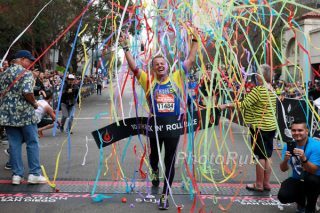
In 2016, Kevin Gonzalez finished his 100th Rock 'n' Roll in the San Diego streets.

In 2016, Kevin Gonzalez finished his 100th Rock ‘n’ Roll in the San Diego streets.
The Synchrony Financial Rock ‘n’ Roll San Diego Marathon and 1/2 Marathon kicks off this weekend in America’s Finest City. Twenty years ago, 20,000 runners from more than 30 countries and all 50 states took to the streets of San Diego for the first-ever Rock ‘n’ Roll race, an event that changed the face of running forever. This year, the series is celebrating its historic anniversary with fun, excitement and some of the fastest runners in the world.
The Rock ‘n’ Roll San Diego Half Marathon course is one of the fastest in the United States. Bernard Koech clocked an absolutely blistering a 58 minute, 41 second time back in 2013. That course record time translates to a mind-blowing 4:28 minute per mile pace.
At this year’s half marathon, records might well fall with Juan Luis Barrios donning the top-seeded bib. The Mexican citizen has run 1:00.46 for the half marathon with 7th and 8th-place finishes in the 2008 and 2012 Olympic Marathons. Gebrekiden Abadi of Ethiopia is expected to give Barrios a run for his money. Abadi lives and trains in Boulder, Colo., and won last year’s Rock ‘n’ Roll Denver. He boasts a personal best within a mere 4 seconds of Barrios. The top-seeded American male is Austin-based Scott MacPherson who has run a half in 1:02.56.
The women’s half marathon promises an excellent showdown as well with Kenya’s Jane Kibii leading the charge. Just 5-feet, 3-inches and 85 pounds, the tiny powerhouse has a 1:10:23 personal best set at Rock ‘n Roll Philadelphia in 2011. Kenya’s typical rival on the roads is the neighboring of Ethiopia. It’s no surprise that Biruktayit Degefa (1:10:25 half-marathon PR) from that country is expected to go toe-to-toe with Kibili on Sunday. Americans Lauren Totten (1:12:01) and Allison Delancy (1:14:24) will also be in the mix and stand outside chances of winning the highly competitive race.
Of course, athletes competing in the full 26.2-distance will be gearing for fast times too. American Eric Noel, the defending champion, hopes to make his win a repeat. Twenty-eight-year-old Noel, who lives in San Luis Obispo, has run 2:21:05. But Noel’s hopes may be dashed. Multiple Rock ‘n’ Roll champion, Jeffery Eggleston, is lacing up his flats to better his 2:10:52 marathon PR. Eggleston won the Lima Marathon in Peru only two weeks ago with an impressive 2:15:02. Hopefully, he’s been recovering well!
Bonnie Keating will wear the cherished F1 bib in the women’s marathon. Keating, a California resident, set her personal best of 2:44:05 at the Carlsbad Marathon last year. Keating has been running competitively since age 14 and competed in last year’s Olympic Marathon Trials as well.
But elite times aside, the forthcoming Rock ‘n’ Roll San Diego weekend will be all about celebrating the series’s incredible history. Long after the professionals have broken the tape and finished their cool-downs, runners will be rocking out along the beautiful course. The Rock ‘n’ Roll races have long served as a catalyst for attracting the new runners to the sport. It is one of the driving forces behind the sport’s boom, which has generated millions of new runners who have sought a fun, welcoming venue to celebrate their commitment to wellness.
The Rock ‘n’ Roll series is also a place where runners and spectators can give back by fostering selfless running in the form of charity funding raising partnerships such as Team In Training, which have been closely linked to events and the entire series.
The San Diego fun kicks off on Friday with the opening of the Health and Fitness Expo at the San Diego Convention Center. The Rock ‘n’ Roll 5K presented by Brooks takes place on Saturday and then the culminating events, the half and full marathons take place that next day with spectacular finishes expected in Waterfront Park.
The party won’t end with the race finish, however, when Michael Franti & Spearhead take to the stage at the Finish Line Festival and give all runners and their families something to celebrate.
The post Rock ‘n’ Roll San Diego Marathon to Celebrate 20 Years Running appeared first on Competitor.com.
30 Moments Over The Last 30 Years That Transformed Running
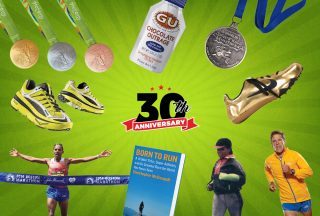

Look at a few photos from 1987, and you’ll realize how far running has come in 30 years. But what led to all those changes? In celebration of Competitor magazine’s 30th anniversary this month, we take a look at the biggest moments in the sport and the industry of running, and their impacts on the sport we love.
The post 30 Moments Over The Last 30 Years That Transformed Running appeared first on Competitor.com.
Ryan Hall's Blog
- Ryan Hall's profile
- 21 followers



